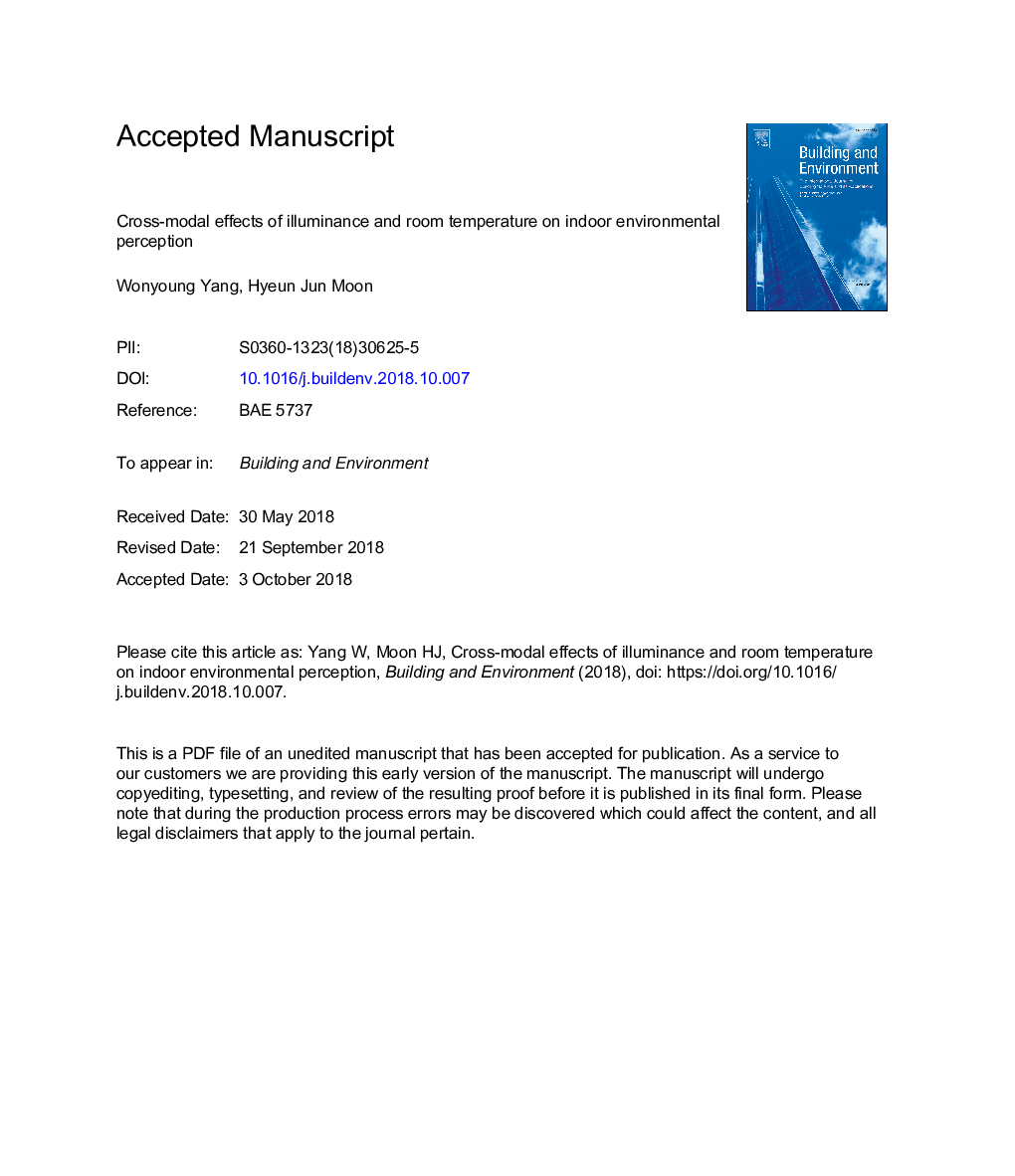| Article ID | Journal | Published Year | Pages | File Type |
|---|---|---|---|---|
| 11024329 | Building and Environment | 2018 | 26 Pages |
Abstract
The cross-modal effects of illuminance and room temperature were investigated in an indoor environmental chamber with 120 university students (60 men and 60 women) aged 18-26 years. A within-subject design was employed with three independent variables: illuminance level (150, 500, and 1000 lx), room temperature (20, 25, and 30â¯Â°C), and gender. Thermal (coldness and hotness) and visual (brightness and relaxation) semantic attributes were assessed using an 11-point numeric scale. The illuminance level of the ambient lighting system did not affect the coldness or hotness. However, the brightness and relaxation were affected by the illuminance and room temperature. The effect sizes of room temperature on both brightness and relaxation were relatively marginal in the test configurations, although the effects of room temperature were significant on the brightness and relaxation according to ANOVA. The cross-modal interactions were asymmetric between the illuminance and room temperature in the indoor environmental settings. The highest visual relaxation of eyes was at 25â¯Â°C and 500 lx. No gender differences were observed for brightness and relaxation.
Related Topics
Physical Sciences and Engineering
Energy
Renewable Energy, Sustainability and the Environment
Authors
Wonyoung Yang, Hyeun Jun Moon,
